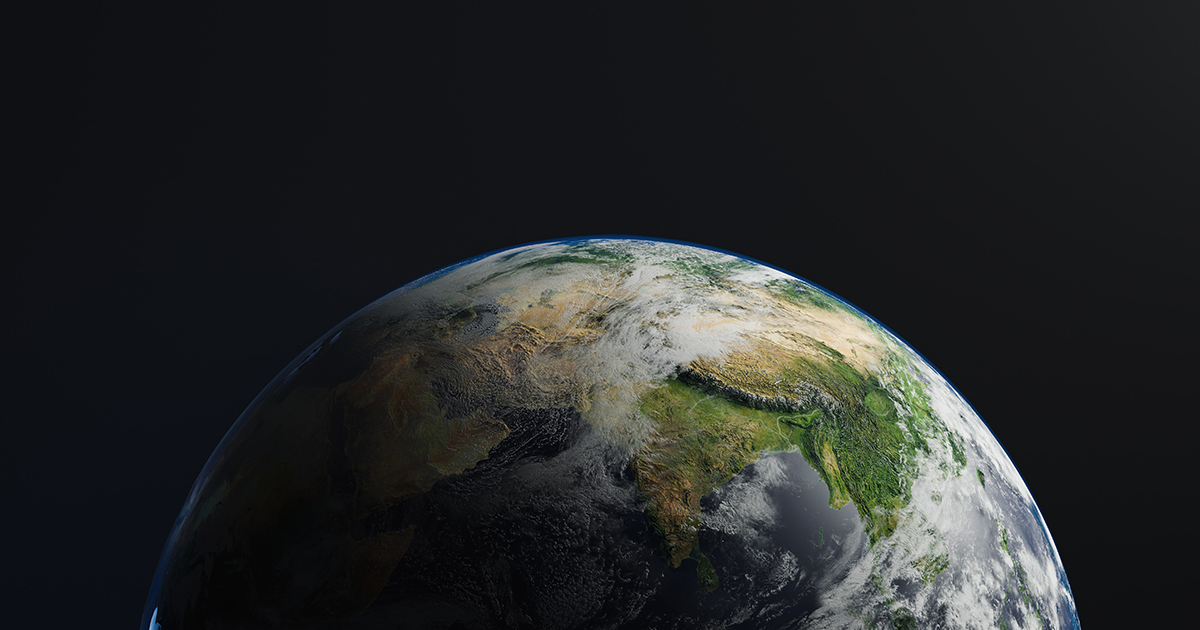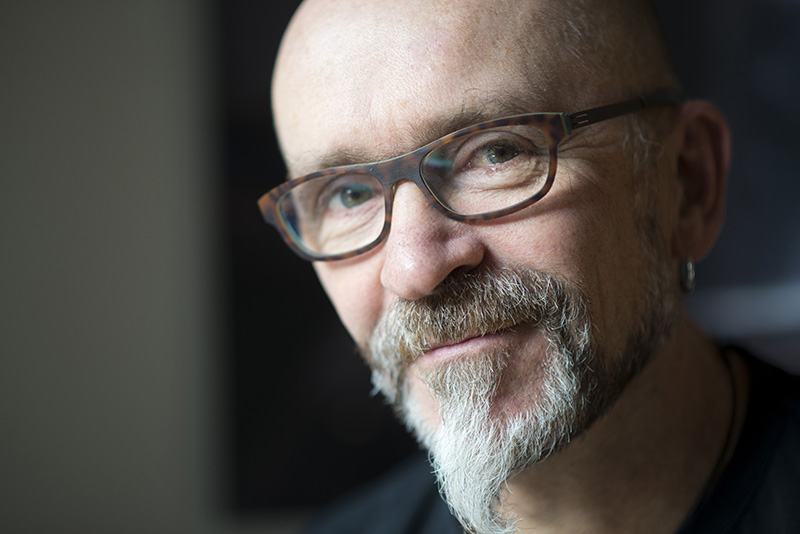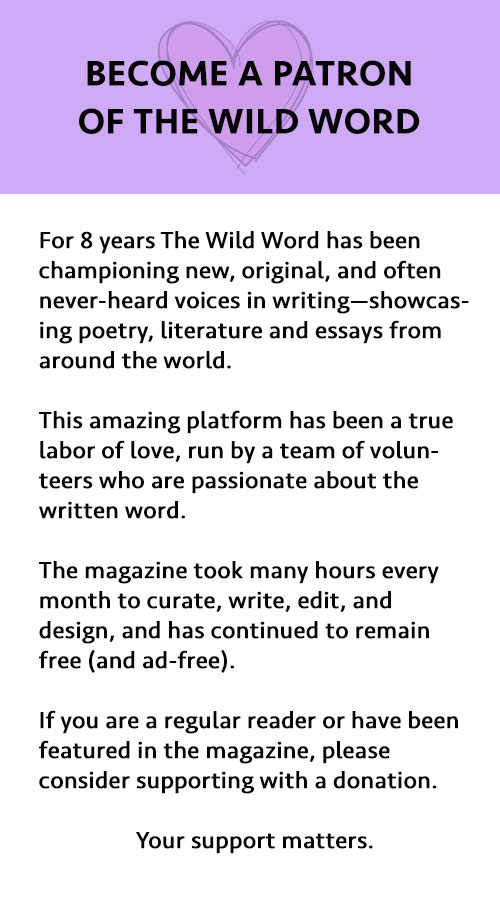SOAPBOX
★ ★ ★ ★
SHADOWS

Image by S. Vimal
By Mike Hembury
The weather took a turn this week here in Central Europe, and the clocks were reset to put an end to summer time. So now it’s dark at four o’clock, evening shadows are lengthening and temperatures are nosediving. Of course summer turned to autumnl a while back already, but it was so warm the whole time that we didn’t notice.
Record warm, hockeystick warm. Off-the graph warm.
The summer heat had stretched on into early October, then mid October, and the trees and plants that hadn’t wilted were making the most of it.
Then suddenly it was autumn, and all that pent-up autumn energy, all that stored-up turning and dying just burst into the open. The trees, suddenly, stared displaying their curled up leaves with a flourish, splashing their autumn colours all across streets, rivers, parks and hillsides.
The world was moving so slowly we thought she had stopped. But she was just coiling, winding, getting ready to unleash everything she had lined up for us.
And now – bang – here she is. Following on from the harrowing, deadly heatwaves that played out around the world during the summer, that delayed autumn that we were experiencing was just a lull, to be followed up for sure by more bad news on the way.
In October, for example, the Mexican city of Acapulco – home to around a million people – was struck by one of the most severe hurricanes ever recorded, a category 5 monster with sustained winds of 165 mph / 257 kph. The hurricane took out the power to the entire city, created mudslides that smashed into residential areas and caused widespread structural damage to the city’s famed hotel shorefront as well as to hospitals, schools and municipal buildings, and took the lives of 46 people with another 58 still missing at the time of writing.
Terrible as it was in terms of human cost, the physics of the matter are clear. Hurricanes are becoming stronger because the oceans are being superheated by climate change. The heat that human activity is currently pouring into the ocean is equivalent to between three and six Hiroshima-sized atomic bombs per second.
Looking further south, October also saw the green lungs of the planet turn brown, as the Brazilian state of Amazonas was gripped by one of its worst droughts in modern history. Over 500,000 people are currently affected by food, water and medicine shortages, and even though the rainy season is long overdue, the drought persists. In addition, many fish species have been unable to spawn, and the Amazon’s famous – and endangered – pink dolphins have been washing up dead on the riverbanks.
If it were just a case of drought caused by global heating, things would be bad enough. But it’s more than that. It’s land use, deforestation, cattle farming, soy farming, drilling for oil, poverty, greed, forest fires, so-called “savannahfication” and an economic system that incentivizes ecocide.
To make matters worse, the cumulative effect of multiple crises is damaging the Amazon’s resilience. It might be possible to recover from one drought, one crisis, but multiple, repeating crises that increase in intensity every year? Things are looking dark.
In the words of Chris Boulton, lead author of a 2022 study on Amazonian tipping points: “The forest might be recovering from one drought and then get hit by another while it’s still recovering. If that happens, it can take even longer to get back to normal, and eventually it reaches a point where it can’t get back to normality.”
The BBC’s Science Focus magazine – not known as a hotbed of sensationalism and conspiracy theories – even ran an article a while back with the frightening title: “The Amazon rainforest: could it become a desert?”
And to top it all, Brazilians are currently facing an unprecedented heatwave, before summer has even arrived. At the time of writing, red alerts for excessive heat have been issued for almost 3,000 towns and cities across Brazil, with Rio de Janeiro hitting 42.5C on November 12 – a record high for the time of year – with high humidity that meant it “felt like 58.5C”.
And if you think floods, drought, and deforestation, are things that only happen to people and places in the global south, then think again.
In mid-October, Storm Ciarán hit Southern England and Northern France with unprecedented ferocity, producing winds of 118 mph / 190 kph, hailstones bigger than golfballs and dumping 20cm / 8 inches of rain onto Tuscany in a three-hour period, causing widespread flooding.
Over the past two weeks, catastrophic flooding has also been recorded in Oman, the Dominican Republic, Somalia, France, Kenya, India, Mexico, Trinidad, Saudi Arabia, Malaysia, Paraguay, Thailand, Italy, Uganda, Indonesia, Brazil, and Turkey.
The climate catastrophe is gaining in intensity and accelerating. Scientific voices are getting louder that we are already breaching the 1.5° mark – that nominal limit to “manageable” global warming. We are now entering the age of unmanageable global warming.
An age in which a city like Acapulco can get basically wiped off the map. An age in which the Amazon – the green lungs of the planet – can turn to a drought-stricken place of death and decay.
Let’s face it, we’re living on borrowed time.
Shadows are lengthening now. Things will be getting weirder and more frightening from here on in.
Of course, the question is: what are we to do about it?
The powers that be already know what to do about it. They have a plan, and that plan is: business as usual for as long as possible, even if it means establishing dictatorship and a system of global apartheid to carry it through.
It’s not for nothing that fascism is on the rise around the world. Enabling fascism is unfettered capitalism’s way of defending itself.
And while the world is distracted with anything but the root causes of our current troubles, i.e. immigrant scares, culture wars and just generally “flooding the zone with shit”, fossil-fuel-powered neoliberalism gets to just keep on raking it in.
If you think I’m exaggerating, just take a look at the facts. Carbon emissions are still rising. Fossil fuel industries are still benefiting from record subsidies, and achieving record profits as a result. And this year’s “State of Climate Action” report finds that 41 of 42 indicators for the achievement of climate goals are not on track to achieve their 2030 targets.
The Potsdam Institute for Climate Impact Research stated back in September that “from global warming to the biosphere and deforestation, from pollutants & plastic to nitrogen cycles and freshwater: Six of nine planetary boundaries are being transgressed…We don’t know how long we can keep breaching these key boundaries before combined pressures lead to irreversible change and harm”.
In other words, global governments are good at making promises, but are failing to deliver the urgent measures needed to stave off climate catastrophe.
On the current trajectory, we’ll be hitting 2.5° within the next 25 years.
The UK’s renowned medical journal the Lancet recently stated that “the rising risks of climate change… are threatening the very foundations of human health.” Warming of over 2° would “produce a 370 percent increase in annual heat-related deaths”, and “put an additional 525 million people at risk of experiencing moderate or severe food insecurity”.
By failing to take the measures necessary to minimize the damaging effects of climate change, world governments have ensured that climate change is, and will be, increasingly catastrophic. And the transformative changes that humanity has to make just to survive will be increasingly abrupt, severe, and painful.
But of course, if we’re busy fighting each other, we’re never going to get around to make those changes.
Divide and rule, it’s the oldest trick in the book.
Let me put the issue as starkly as I can. Bottom line: Human civilisation, no, human survival is at stake. If we lock in 3° of warming, we may trigger runaway climate heating.
Hell, we may already have triggered it.
Don’t you think it’s time we stopped tinkering around the edges? Don’t you think it’s time the world actually started reversing the trend?
We need to massively invest in regenerative technologies, protective technologies, reforestation, rewilding, alternative fuels, free transportation, ecological restoration if we want to have any hope of getting through this thing.
Do you see any world government of any stripe seriously doing any of these things?
No, of course not, with one magnificent exception: The Republic of Costa Rica.
During most of the 20th century, Costa Rica’s biodiversity (close to 5% of the world’s known species) was under severe threat. At the end of the century, the country had the world’s highest global deforestation rates, with less than 25% of the country’s original forest cover remaining.
Now, Costa Rica has reversed its deforestation, stopped biodiversity loss, and increased forest cover to over half its total territory, all at the same as increasing economic growth.
Don’t let anyone tell you it can’t be done.

Mike Hembury is an Anglo-Berliner originally from Portland, England. He’s a writer, translator, musician, coder, sailor, environmentalist and guitar nerd in no particular order. He is the author of New Clone City, nominated as a “Hot Berlin Read” by Exberliner magazine. You can follow Mike on Twitter here: twitter.com/schnappz
























0 Comments